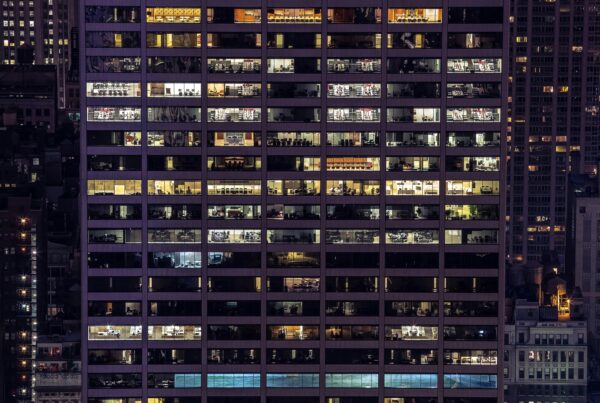Fast fact: Many of us spend long hours indoors. Sadly if it’s a particularly ill-built building, we could be breathing badly recirculated air, depriving ourselves of healthy natural daylight, exposing ourselves to whatever toxic chemicals that are off-gassing from the interiors, and dangerously being stagnant on our office chairs.
As Paul Scialla says, “Why stop at building homes or offices or hotels that are good for just the environment, why not also build these structures so they’re good for the people who live, work and stay in them?”
Scialla happens to be the founder of the IWBI (International WELL Building Institute) and Delos, which last year launched the WELL Building Standard. The standard is meant to be a new performance-based benchmarking tool for providing systematic and scientific assessments of a building’s health impacts on its occupants. While LEED has always been at the forefront of healthy and green built environments, there have been no dedicated standard for measuring healthy buildings prior to the WELL Building Standard. What this adds to the table is a more holistic, focused, and hopefully rigorous benchmarking for a building’s health impacts.
Key Categories for Healthy Buildings
Being an evidence-based approach, the WELL Building Standard had to be developed as scientifically as possible. Seven years in the making, the initiative was made possible by a teamwork of doctors and scientists from the Cleveland Clinic and Mayo Clinic, as well as architects and thought leaders.
From them came seven key categories that would help define a healthy building:
Air
Water
Nourishment
Light
Fitness
Comfort
Mind
Of course, LEED already has an indoor environmental quality assessment, which looks at various elements and details such as air quality, thermal conditions, daylighting, ergonomics, pest management, even acoustics. Especially with LEED v4, health became an even more urgent matter when the Materials and Resources credit sought to regulate chemicals of concern in building materials.
Obviously the categories of the WELL Building Standard draw on the concepts of LEED. The very idea of greenness is actually tied to wellness. As Nikki Gloudeman, writing for GreenBiz, notes that “Far from existing in a vacuum, these initiatives often dovetail with sustainability efforts. Air quality and lighting, for example, are both green and wellness issues.” About 10 to 20 percent of WELL and LEED standards are already naturally overlapping according to USGBC’s Rick Fedrizzi. Last month, the GCBI (Green Business Certification Inc., formerly known as Green Building Certification Institute) and the IWBI made their partnership official.
The WELL Building Standard also complements BREEAM (Building Research Establishment Environmental Assessment Methodology), and even China’s very own Three Star system. China with its robust building boom should be concerned about health more than anyone else, especially amidst its pollution problem. The country is also home to tens of thousands of factories and manufacturing plants, often with inhospitable working conditions, so healthy buildings is indeed a prime concern in the country.
Conscious Healthy Design
We often think of healthy building design as one that incorporates the least possible amount of toxic chemicals. But more than just the necessary omissions, healthy buildings can also be had with some healthy additions.
For example, in the past a walkalator would have been a nice feature to add to a building, for everyone’s convenience. While that may work in specific cases (i.e. airports), that’s not always a good thing. Naturally a healthier alternative would have been a staircase. Likewise companies who encourage biking among its employees might as well provide ample parking areas and shower rooms too. And these days companies tout their gyms and spas and sleeping quarters (on top of their healthcare) as added benefit for their prospective employees. Even onsite cafeterias and restaurants that offer healthy menus are becoming a noteworthy feature of companies (Notice the Nourishment category of the WELL standard.)
And people are responding positively to these healthy changes. Employees are more assertive these days in demanding healthy workplace environments. Healthy buildings have been linked to increased worker happiness and productivity. And because employees spend anywhere from nine to ten hours inside offices every day, building health can indeed have a bearing on the people who work and stay there.
Back to the WELL Building Standard. USGBC’s Rick Fedrizzi has this to say:
“We always say green buildings are healthier for their inhabitants, but until now, we didn’t have an aggressive system that looked at wellness and the human condition from a completely separate lens.”










